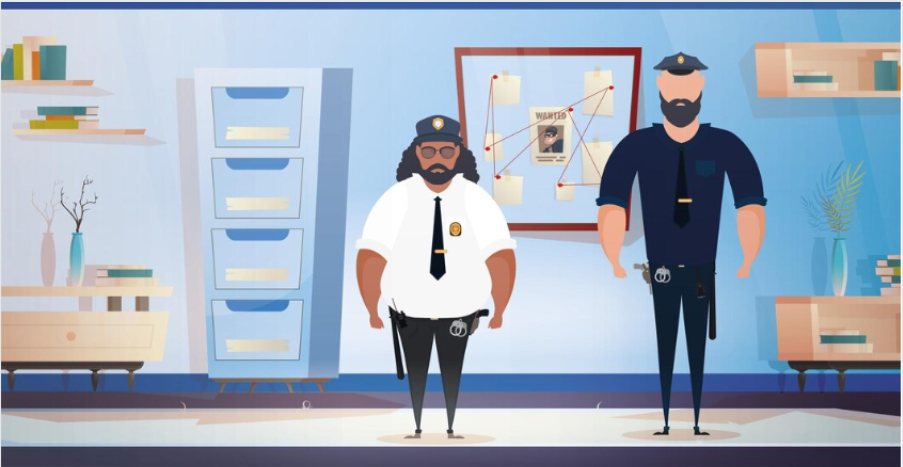In today’s dynamic retail landscape, ensuring the safety and security of both customers and employees is paramount. Retail environments are bustling hubs of activity, attracting diverse crowds and housing valuable merchandise. From preventing theft and vandalism to deterring potential threats, maintaining a strong security presence is essential for safeguarding retail spaces. In this comprehensive blog, we will delve deep into the importance of a robust security presence in retail environments, exploring the various challenges faced by retailers and the strategies employed to mitigate risks and enhance safety.
Understanding the Challenges
Theft and Shoplifting
One of the most significant challenges faced by retailers is theft, with shoplifting being a prevalent concern. Opportunistic thieves often target retail establishments, attempting to steal merchandise and valuables without detection. This not only results in financial losses for retailers but also compromises the safety and well-being of customers and employees.
Organized Retail Crime
Organized retail crime (ORC) poses a significant threat to retail environments, with criminal syndicates orchestrating elaborate schemes to steal merchandise in bulk for resale on the black market. These sophisticated operations can result in substantial losses for retailers and pose safety risks to store personnel and customers.
Vandalism and Property Damage
Vandalism and property damage are other common challenges faced by retailers, with malicious individuals defacing storefronts, damaging property, and causing disruptions. These acts not only tarnish the reputation of retail establishments but also create an atmosphere of insecurity and unease among patrons.
The Role of Security in Retail Environments
Deterrence and Prevention
A strong security presence serves as a deterrent to would-be criminals, signaling to potential offenders that retail establishments are well-protected and closely monitored. Visible security measures, such as uniformed guards, surveillance cameras, and access control systems, can discourage criminal activity and prevent incidents from occurring.
Rapid Response and Intervention
In the event of a security breach or emergency situation, security personnel play a crucial role in facilitating a rapid response and intervention. Trained guards can quickly assess the situation, coordinate with law enforcement agencies if necessary, and take appropriate action to mitigate risks and ensure the safety of individuals within the retail space.
Customer Service and Assistance
Security personnel are not only responsible for enforcing security protocols but also for providing customer service and assistance to patrons. Friendly and approachable guards can help customers navigate the store, answer questions, and address concerns, enhancing the overall shopping experience and fostering a sense of trust and confidence.
Strategies for Enhancing Security
Comprehensive Risk Assessment
Retailers should conduct comprehensive risk assessments to identify potential security vulnerabilities and develop tailored strategies to address them. This may involve evaluating the layout of the store, assessing access points and entryways, and identifying high-risk areas prone to theft or vandalism.
Investment in Technology
Investing in advanced security technology can significantly enhance the effectiveness of safeguarding retail security measures. Surveillance cameras, alarm systems, and electronic article surveillance (EAS) tags can help monitor store activity, detect suspicious behavior, and deter theft and shoplifting.
Training and Education
Providing ongoing training and education to retail staff is essential for maintaining a strong security presence. Employees should be trained to recognize signs of suspicious activity, follow security protocols, and respond appropriately in emergency situations. Regular training sessions and drills can help reinforce security awareness and preparedness among staff members.
Collaboration and Partnership
Collaborating with local law enforcement agencies, neighboring businesses, and community organizations can further bolster retail security efforts. Establishing partnerships with external stakeholders allows retailers to share information, coordinate responses to security threats, and leverage additional resources to enhance safety and security in the area.
Conclusion
In conclusion, the importance of a strong security presence in retail environments cannot be overstated. From deterring theft and vandalism to ensuring the safety and well-being of customers and employees, security measures play a vital role in safeguarding retail spaces. By understanding the challenges faced by retailers, recognizing the role of security in mitigating risks, and implementing strategies to enhance security, retailers can create a safer and more secure environment for all stakeholders. With a proactive approach to security and a commitment to collaboration and partnership, retailers can effectively address security concerns and maintain the trust and confidence of their patrons.


